Related Research Articles
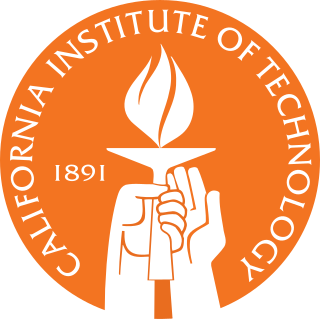
The California Institute of Technology (branded as Caltech) is a private research university in Pasadena, California. The institution was founded as a preparatory and vocational school by Amos G. Throop in 1891 and began attracting influential scientists such as George Ellery Hale, Arthur Amos Noyes, and Robert Andrews Millikan in the early 20th century. The vocational and preparatory schools were disbanded and spun off in 1910, and the college assumed its present name in 1920.
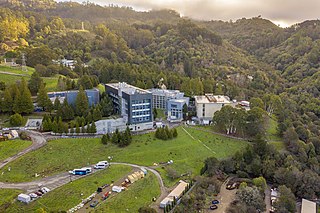
Lawrence Berkeley National Laboratory is a federally funded research and development center in the hills of Berkeley, California, United States. Established in 1931 by the University of California (UC), the laboratory is sponsored by the United States Department of Energy and administered by the UC system. Ernest Lawrence, who won the Nobel prize for inventing the cyclotron, founded the lab and served as its director until his death in 1958. Located in the Berkeley Hills, the lab overlooks the campus of the University of California, Berkeley.

The United States Department of Energy National Laboratories and Technology Centers is a system of laboratories overseen by the United States Department of Energy (DOE) for scientific and technological research. The primary mission of the DOE national laboratories is to conduct research and development (R&D) addressing national priorities: energy and climate, the environment, national security, and health. Sixteen of the seventeen DOE national laboratories are federally funded research and development centers administered, managed, operated and staffed by private-sector organizations under management and operating (M&O) contracts with the DOE. The National Laboratory system was established in the wake of World War II, during which the United States had quickly set-up and pursued advanced scientific research in the sprawling Manhattan Project.
Artificial photosynthesis is a chemical process that biomimics the natural process of photosynthesis. The term artificial photosynthesis is used loosely, referring to any scheme for capturing and then storing energy from sunlight by producing a fuel, specifically a solar fuel. An advantage of artificial photosynthesis would be that the solar energy could converted and stored. By contrast, using photovoltaic cells, sunlight is converted into electricity and then converted again into chemical energy for storage, with some necessary losses of energy associated with the second conversion. The byproducts of these reactions are environmentally friendly. Artificially photosynthesized fuel would be a carbon-neutral source of energy, but it has never been demonstrated in any practical sense. The economics of artificial photosynthesis are noncompetitive.
The Global Climate and Energy Project (GCEP) at Stanford University, "seeks new solutions to one of the grand challenges of this century: supplying energy to meet the changing needs of a growing world population in a way that protects the environment."

The Advanced Light Source (ALS) is a research facility at Lawrence Berkeley National Laboratory in Berkeley, California. One of the world's brightest sources of ultraviolet and soft x-ray light, the ALS is the first "third-generation" synchrotron light source in its energy range, providing multiple extremely bright sources of intense and coherent short-wavelength light for use in scientific experiments by researchers from around the world. It is funded by the US Department of Energy (DOE) and operated by the University of California. The current director is Dimitri Argyriou.
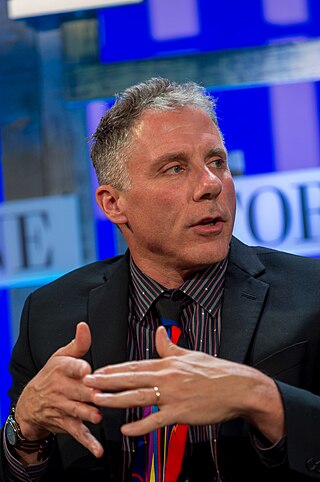
Harry Albert Atwater, Jr. is an American physicist and materials scientist and is the Otis Booth Leadership Chair of the division of engineering and applied science at the California Institute of Technology. Currently he is the Howard Hughes Professor of Applied Physics and Materials Science and the director for the Liquid Sunlight Alliance (LiSA), a Department of Energy Hub program for solar fuels. Atwater's scientific effort focuses on nanophotonic light-matter interactions and solar energy conversion. His current research in energy centers on high efficiency photovoltaics, carbon capture and removal, and photoelectrochemical processes for generation of solar fuels. His research has resulted in world records for solar photovoltaic conversion and photoelectrochemical water splitting. His work also spans fundamental nanophotonic phenomena, in plasmonics and 2D materials, and also applications including active metasurfaces and optical propulsion.

Steven Chu is an American physicist and former government official. He is a Nobel laureate and was the 12th U.S. secretary of energy. He is currently the William R. Kenan Jr. Professor of Physics and Professor of Molecular and Cellular Physiology at Stanford University. He is known for his research at the University of California, Berkeley, and his research at Bell Laboratories and Stanford University regarding the cooling and trapping of atoms with laser light, for which he shared the 1997 Nobel Prize in Physics with Claude Cohen-Tannoudji and William Daniel Phillips.
The Office of Energy Efficiency and Renewable Energy (EERE) is an office within the United States Department of Energy. Formed from other energy agencies after the 1973 energy crisis, EERE is led by the Assistant Secretary of Energy Efficiency and Renewable Energy, who is appointed by the president of the United States and confirmed by the U.S. Senate. Alejandro Moreno currently leads the office as the Acting Assistant Secretary.

According to data from the US Energy Information Administration, renewable energy accounted for 8.4% of total primary energy production and 21% of total utility-scale electricity generation in the United States in 2022.

Daniel George Nocera is an American chemist, currently the Patterson Rockwood Professor of Energy in the Department of Chemistry and Chemical Biology at Harvard University. He is a member of the National Academy of Sciences and the American Academy of Arts and Sciences. In 2006 he was described as a "major force in the field of inorganic photochemistry and photophysics". Time magazine included him in its 2009 list of the 100 most influential people.
Nathan S. Lewis is the George L. Argyros Professor of Chemistry at the California Institute of Technology (Caltech). He specializes in functionalization of silicon and other semiconductor surfaces, chemical sensing using chemiresistive sensor arrays, and alternative energy and artificial photosynthesis.
Craig L. Hill is an American scientist. He is working now with his research group at the Emory University.
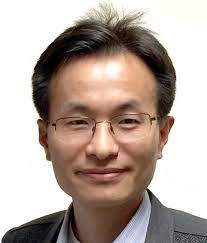
Peidong Yang is a Chinese–American chemist, material scientist, and businessman. He is currently a professor at the University of California, Berkeley and a member of the American Academy of Arts and Sciences. He is a Professor of Chemistry and a Professor of Materials Science. His research group studies the synthesis of nanomaterials and their electronic and optical properties. He is also a Department Head at the Joint Center for Artificial Photosynthesis, Senior Faculty Scientist at Lawrence Berkeley National Laboratory, and Deputy Director of the Center of Integrated Nanomechanical Systems (COINS). He is an associate editor of the Journal of the American Chemical Society, an American Chemical Society Journal.
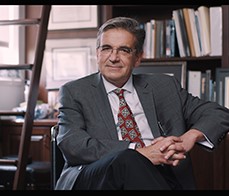
Ares J. Rosakis, Theodore von Kármán Professor of Aeronautics and Professor of Mechanical Engineering at the California Institute of Technology. He was also the fifth Director of the Graduate Aerospace Laboratories, known as (GALCIT), and formerly known as Guggenheim Aeronautical Laboratory, and was the Otis Booth Leadership Chair, of the Division of Engineering and Applied Science.
JCAP may refer to:
The Bionic Leaf is a biomimetic system that gathers solar energy via photovoltaic cells that can be stored or used in a number of different functions. Bionic leaves can be composed of both synthetic and organic materials (bacteria), or solely made of synthetic materials. The Bionic Leaf has the potential to be implemented in communities, such as urbanized areas to provide clean air as well as providing needed clean energy.
Chiara Daraio is an Italian-American materials scientist and acoustical engineer. She is the G. Bradford Jones Professor of Mechanical Engineering and Applied Physics at the California Institute of Technology.
Miguel A. Modestino is a Venezuelan-born chemical engineer and co-founder of Sunthetics along with Myriam Sbeiti and Daniela Blanco. Sunthetics uses artificial intelligence to optimize chemical reactions by inducing electrical pulses, from renewable energy, into the reaction instead of just heating them. Modestino is a part of the Joint Center for Artificial Photosynthesis, which is a group focused on reducing the need for fossil fuel by developing solar fuels as a direct alternative. Modestino also formed a group called the Modestino Group, which specialize in developing state of the art electrochemical devices to optimize and tackle the issues revolving renewable energy at New York University (NYU), where he is the Donald F. Othmer Associate Professor of Chemical Engineering and the Director of Sustainable Engineering Initiative.
Jose L. Mendoza-Cortes is a theoretical condensed matter physicist and material scientist specializing in computational physics, materials science, chemistry, and engineering. His studies include methods for solving Schrödinger's or Dirac's equation, machine learning equations, among others. These methods include the development of computational algorithms and their mathematical properties.
References
- ↑ Eisenberg, Anne (21 May 2011). "New York Times article about artificial photosynthesis". The New York Times.
- ↑ "India Times article about artificial photosynthesis". Archived from the original on August 12, 2013.
- ↑ "EE Times article about JCAP".
- ↑ "CBS SF article about opening of JCAP North". 3 June 2011.
- ↑ "Caltech news article about Obama's 2011 State of the Union address".
- ↑ "Berkeley news article about Obama's 2011 State of the Union address". Archived from the original on 2012-12-10.
- ↑ "Scientific American Article about Obama's 2011 State of the Union".